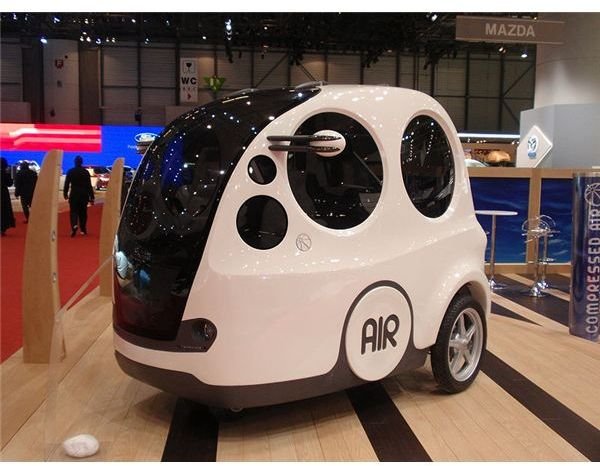What are Compressed Air Vehicles? What is ACV?
Every other day we hear about conventional sources of energy like gasoline and diesel shrinking by a huge margin. The need for alternative fuels has become even more important in the current scenario, when every day thousands of new vehicles are rolled out by the automobile companies. Alternative vehicles like electric cars, hydrogen cars, and hybrid vehicles have become popular of late. The latest happening news from the alternative vehicle segment is the rising popularity of Compressed Air Vehicles. Negligible fuel hazards and clean operations are major characteristics of a compressed air vehicle. As far as gaseous emissions are concerned, these vehicles do not release anything that disturbs the ecological balance of the nature.
The Compressed Air Vehicles
This type of vehicle, unlike many others runs not on fuel, but on a working fluid, which is air. It is powered by an air engine using

compressed air stored in a pressurized tank. No combustion takes place in its operation; the expansion of compressed air is what drives its piston. Its engine could produce a high efficiency with almost zero exhaust and no fuel hazard.
Engine Operation and Mechanism
Although compressible as a fluid, air can exert tremendous force, as what is shown when it is applied in pneumatic cylinders. In the case of automobile applications, the principle is the same as in pneumatics; work is created by the expansion of compressed air. This is accomplished by first storing air in tanks at high pressure such as 30 Mpa (4500 psi or 300 bar). Tanks are constructed with lightweight materials such as carbon fibers. The vehicle utilizes no fuel and air is used as a working substance instead with no combustion taking place. It should be noted that compressed air engines are already in used in tools, torpedoes and railways. In automobiles, the expanding air released from tanks then moves the pistons, which drives the engine. Typical air engines use one or more expander pistons. This makes the compressed air engines literally a pneumatic actuator that drives a vehicle.
At present there are several variations in air engine design. Some uses an alternator to improve the running time of the engine. There are also those that use rotary engine designs. And to make the engine more efficient, the air is then heated; one manufacturer even claims achieving ninety percent efficiency.
The vehicle produces very little exhaust with impurities coming mostly form residues of the engine lubricants. Any emission source is displaced from the vehicle’s tail pipe to the central electrical generating plant; the engine itself runs on its exhaust. Air used in the engine is filtered from dust to protect the compressor machinery, so the air discharged has less dust suspended in it.
Advantages and Disadvantages over other Vehicles
This is in the case of automobile applications only and not in other compressed air vehicles. Since the need for a combustion system and cooling system is eliminated, the vehicle cost is cut by 20%. And air is nonflammable, eliminating the fire hazard for vehicles. Air can also produce a very high torque for minimum volume, and the design for the engine is simple and robust. The manufacturing cost is low, and the vehicle is easy to maintain. Used tanks can be recycled with less pollution- unlike batteries. Compressed air tanks also won’t degrade, which is a problem with battery use, are easy to refill with air, and the vehicle itself is a lot lighter. The fueling price is also cheaper.
Compressed air technology also shows weaknesses in some areas. Although engines are simple and robust, it is still not as robust as similar engine technology. Problems could also arise when it is used in cold weather. Another major disadvantage may be the refueling time of the vehicle. Unlike with gasoline stations, you might need to wait for hours to safely refuel your tank to its full capacity. However, faster charging stations can solve this problem.
Some automobile companies are working on using advanced absorption materials like activated carbon so that compressed air can be stored at a low pressure within the tank itself.
Many automobile companies have shown interest in developing such vehicles and some of them have even planned to make it mandatory for their employees to use these vehicles, so that they set an example for people to follow. Of course, this will serve as a free marketing plan as well.
References
Compressed Air Engine: The EOS, https://www.civil.northwestern.edu/EHE/HTML_KAG/Kimweb/EOS.pdf
Compressed Air Motor Runs car, https://panacea-bocaf.org/compressedair.htm
Image
Compressed Air Vehicle by El Monty licensed under Creative Commons Attribution-Share Alike 3.0 Unported,
https://commons.wikimedia.org/wiki/File:MDI_Air_Pod_%281%29.JPG